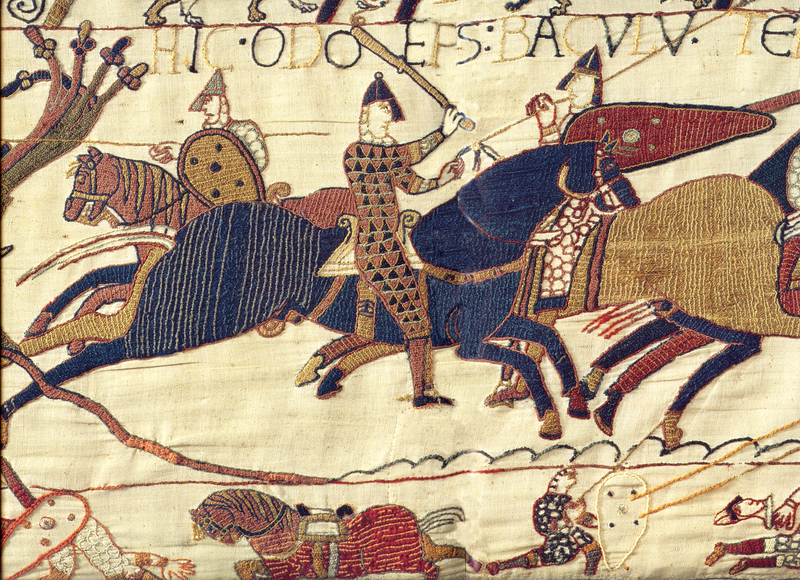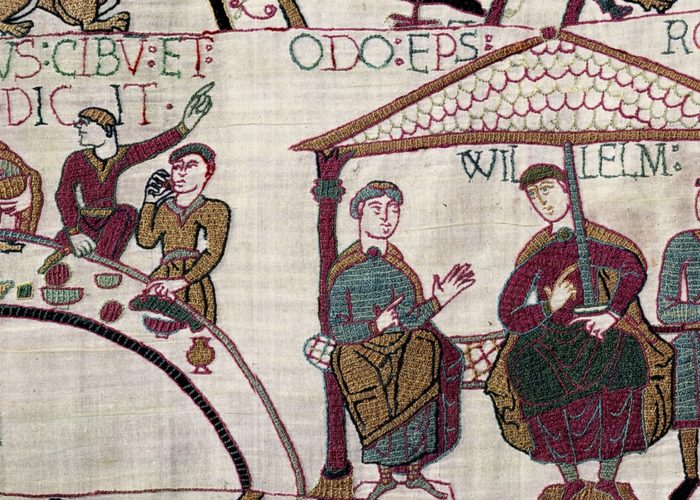

It is not actually a tapestry in the traditional sense, but rather an embroidered cloth that tells the story of the Norman Conquest of England. Here are some key points about the Bayeux Tapestry:
- Origin: The Bayeux Tapestry is believed to have been created in the 11th century, shortly after the Norman Conquest. The exact date of creation is a subject of debate, but it is generally attributed to the 1070s.
- Length and Material: The tapestry is approximately 70 meters (230 feet) long and 50 centimeters (20 inches) wide. It is made of linen and embroidered with colored woolen threads.
- Narrative: The main purpose of the Bayeux Tapestry is to depict the events leading up to and including the Norman Conquest of England in 1066, particularly the Battle of Hastings. It tells the story in a continuous narrative, with Latin inscriptions providing explanations and captions.
- Artistic Style: The tapestry is known for its detailed and lively scenes. The embroidery style is somewhat reminiscent of the Bayeux School of Embroidery, with characters and events depicted in a stylized but engaging manner.
- Current Location: The original Bayeux Tapestry is housed in the Bayeux Museum in Bayeux, Normandy, France. It is displayed in a specially designed exhibit that allows visitors to view the entire tapestry.
- Historical Significance: The Bayeux Tapestry is considered a significant historical source for the events of the Norman Conquest, and it provides valuable insights into the clothing, armor, and tactics of the time.
- Ownership Disputes: Over the years, there have been discussions about whether the Bayeux Tapestry should be returned to England, where it was originally created, but it remains in France as of my last knowledge update in January 2022.
The Bayeux Tapestry continues to be a popular subject of study and a fascinating glimpse into medieval history and art. It remains a symbol of the Norman Conquest and its lasting impact on English history.
In the late 19th century, an extremely ambitious project was undertaken by a group of Victorian embroiderers to recreate the Bayeux Tapestry in full, painstakingly reproducing every single detail, stitch-by-stitch, so that the Tapestry’s timeless story could be enjoyed by the people of Britain.
Today, this artwork, Britain’s Bayeux Tapestry, is held at Reading Museum
